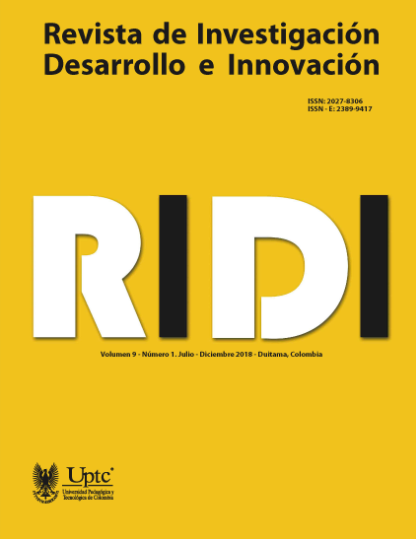Fortalecimiento del pensamiento variacional a través de una intervención mediada con TIC en estudiantes de grado noveno

Resumen
En este artículo se presentan los resultados de una investigación cualitativa en el área de matemáticas, en la cual se trató el desarrollo del pensamiento variacional en estudiantes de noveno grado, 14 a 17 años, usando para tal fin secuencias didácticas diseñadas para el estudio y mediadas con TIC. El estudio contempló tres etapas: un diagnóstico inicial que permitió identificar el nivel de presaberes en aritmética y en pensamiento variacional, basado en los indicadores definidos en las pruebas saber; una intervención con las secuencias didácticas diseñadas, las cuales se ajustaron al plan de área institucional y orientando algunas actividades de aprendizaje al análisis de situaciones de variación y cambio; un diagnóstico final que evaluó el nivel alcanzado por el grupo de estudiantes participantes. El análisis de los resultados permite sugerir que la intervención generó cambios significativos en el grupo de estudiantes en lo relacionado al pensamiento variacional.
Palabras clave
pensamiento variacional; secuencia didáctica; mediación con TIC; variación; cambio
Biografía del autor/a
Leonardo Geiner Martínez-López
Ingeniero Mecánico, Estudiante de Maestría en Educación.
Elgar Gualdrón-Pinto
Licenciado en Matemáticas, Doctor en Didáctica de las Matemáticas.
Citas
- Bonilla, E., Rodríguez, P. (2000). Más allá del dilema de los métodos. Bogotá: Grupo Editorial Norma.
- Díaz, A. (s.f). Guía para la elaboración de una secuencia didáctica. México: Recuperado de http://www.setse.org.mx/ReformaEducativa/Rumbo%20a%20la%20Primera%20Evaluaci%C3%B3n/Factores%20de%20Evaluaci%C3%B3n/Pr%C3%A1ctica%20Profesional/Gu%C3%ADa-secuencias-didacticas_Angel%20D%C3%ADaz.pdf
- Elliot, J. (1993). La investigación-acción en educación. Madrid: Ediciones Morata, S.
- Godino, J., Font, V. (2003). Razonamiento algebraico y su didáctica para maestros. Recuperado de https://www.ugr.es/~jgodino/edumat-maestros/manual/7_Algebra.pdf
- Jaramillo, P., Castañeda, P., Pimienta, M., (2009). Qué hacer con la tecnología en el aula: Inventario de usos de las TIC para aprender y enseñar. Educación y Educadores, 12(2), 160-79.
- Kemmis, S. (1998). El currículum más allá de la teoría de la reproducción. Madrid. Morata
- MEN (1998). Lineamientos Curriculares para el área de Matemáticas. Santa fe de Bogotá: Recuperado de https://www.mineducacion.gov.co/1621/articles339975_recurso_6.pdf
- Ministerio de Educación Nacional. Pensamiento Variacional y Tecnologías Computacionales. PROYECTO Incorporación de Nuevas Tecnologías al Currículo de Matemáticas de la Educación Básica Secundaria y Media de Colombia. Ministerio de Educación Nacional. Dirección de Calidad de la Educación Preescolar, Básica y Media. 2004
- Ministerio de Educación Nacional, MEN. (2006). Estándares Básicos de Competencias en Matemáticas. Recuperado de: http://www.mineducacion.gov.co/1621/articles-116042_archivo_pdf2.pdf
- Ministerio de Educación Nacional. Foro Educativo Nacional 2014: ciudadanos matemáticamente competentes. Bogotá. Colombia. (2014).
- Real Pérez, M. (2013). Las TIC en el proceso de enseñanza y aprendizaje de las Matemáticas. Materiales para el desarrollo curricular de matemáticas de tercero de ESO por competencias, 8. Recuperado de https://personal.us.es/suarez/ficheros/tic_matematicas.pdf